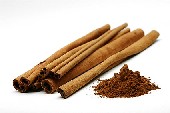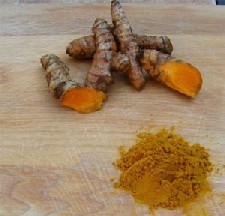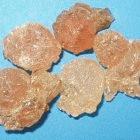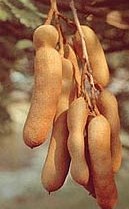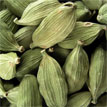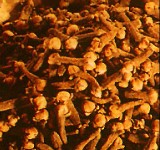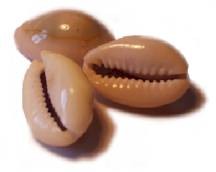To next page
Al Biruni: Kitab al-Saydanah fi Al-Tibb (Book on Pharmacy) (1050)
Taken from : Hamdard foundation : Al Biruni's book on pharmacy and materia medica
Abnus (Ebony) There are two varieties of this plant. One is black, tinted with green, and glistens like a coral. It possesses straight clean strands of wood, but there may be present crooked strands. This variety is brought from the coast of Zanj and the islands of that country. Its tree resembles jujube and its seed that of henna. In Zanj is also found a beautiful variety possessing the whiteness of sandal wood and the redness of shellac. Its seeds are like those of black pepper. The hasps of knives and arrow bows are also made of ebony. It is also called shauhat and the Arabs make their strings from it......
Abu Hanifah Dinawari writes in the Kitab-al-nabat that balsam from which platters are made is not a longish tree but its wood is hard and patterned with yellow and blackish tints. At times the yellowish tint is substituted by reddish. It grows in the valleys of Rome and around the Gulf. This is an excellent variety. The other variety of ebony is that which has no color except the black. This is brought from Waqwaq in the islands of Qamir. The people of Waqwaq are blackish; they prefer the golden complexioned Turkish slaves.
Utrujj and Utrunj(Citron, Adam's apple) ....
The Egyptian variety of this herb produces a striped fruit like water melon. Many have exaggerated about its bigness, notably Jahiz. It is said that if it is placed between two people, they can not see each other. The bigness of the variety produced in Zanjibar is especially exaggerated beyond all permissible bounds. It is said that if the fruit is cut in the middle, two people can pass over it, as they would pass over a boat.....
Baqqam (the red wood tree).
The people of Sawahil say that there are two kinds of baqqam; one variety is brought from Sanf. It is known as the black-backed and possesses a red-dish tinge. The other brought from Lamri is known as the white-backed and its redness is more apparent....
Ibrahim Sandani once traveled in the desert of China with a nomadic tribe. He has narrated that when the sun was about to set, the people accompanying him dismounted from their horses and prostrated themselves. He also prostrated himself. The orison continued till the sun disappeared completely from the view. On Ibrahim's enquiry why this was done, the people explained that they considered the sun to be a god in the form of a very big bird whose habitat is a barren and uninhabited desert, between Zanj and China, feeding on huge elephants which can not be tamed and which they called Khutu....
Dar Sini (Ceylon Cinnomon)
The Zinzibarian variety is malodorous; it is admixed with a fragrant herb. Sometimes a thing resembling Ceylon cinnamon is found; it is a vegetable but less fragrant.....
Zanjabil; The moist plant is known as adrak and the dry plant as sundh in Hindi. The Persian synonyms are shinkrir, zangbir, and shanklil. In Syriac it is zangabil and in Takhari Shank-ranir.
Dioscorides writes; It is a galingalelike root, white, and pungent like black pepper, and fragrant. Take the root that has not undergone desiccation. Galen says that it is brought from Barberry and this herb, as well as long pepper, are infested easily by worms because of moistness. Among the perfumeries it is said to comprise the Hindi and Zangi varieties. It is also known as Chini.
Abu Hanifah says: it is endemic to the villages of Oman. The bundles found underground are the rhizomes and not the plants. It is a plant like elecampane. The Chinese or the Zangi is appreciated more then the other varieties.
Sandarus (gum copal).....
The tree grows in the region of the Zanj. It is scrapped and tied till the exudate commences to flow and ultimately congeals. Insects and other creatures are found in the exudate for this reason. There are two varieties of sandarus. One is of every-day use. The other variety which is far purer is rare. The distinction between the two is that the former, when heated, contracts and cracks, while the later, like gum, softens and, like the latter become viscid.....
Siyah Dawaran
It is a synonym for the terebinth tree. Some claim it to be oak. In Syriac it is maqar and this is, in fact, sabir (aloe)...
It is associated with Socotra which is near Zanzibar and Arabia.
Subar. This is tamar-i-Hindi (tamarind). This name was given to it because its sourness demands patience. Hamzah says; In Persian it is jinjah, and grows plenty in Zing. In Sind it is imbli. Its tree is large like that of mulberry and its grain, like that of broad bean, very slender. When it ripens and its rind becomes paler, tamar-i-Hindi remains. In the Zinji language it is called makojuwa....
Tabashir (english Tabasheer this is young shoots, seeds and siliceous concretion of a bamboo kind plant)
It is known in Hindi as bain-sharochan and tushir. It is said to be Zangi (from Zanzibar) A commodity that looks like wheat flour is brought from India and is called lakur. It is claimed that this is tabashir-i-Hindi. In Syriac it is known as qamhadarza, tabaqshir, and tawakhshir...
Fuwah al-sabbaghin; (heart-leaved madder, it is the roots that are used)
It is munt in Hindi ruin in Persian and roghnaz in Jurjani. There are two varieties of the plant: one is copiously knotted, the other is sparsely so. The former is known as kardan, followed by the Zinjani which is called yazduni. It is slenderer and finer than the Qabadhi variety. The best variety is the bardai from Armenia which is supplied to Jurjan, Sistan, Makran, India and Zanj. These are very thick red subers. The Qabadhi variety is the next, and is preferred by the Indians. One variety of it is indigenous to Balkh and is called hafsawi. It is inferior to the Qabadhi variety but resembles the barda'i. It is therefore roasted in a hot empty oven, so that its color becomes firmer. It is then mixed with the bardha'i variety.
Qaqullah; (greater cardamon)
Yahya and Khushki write, in the purity of the fragrance it is like cubeb and in odor somewhat like camphor. Brought from sufalah, the seeds are like those of a big gram which are sheathed and, which when cloven, reveal white and small grains....
Qaranful (clove)
Yahya and Khushki write; The most excellent kind is desiccated, pungently odorous, and sweet. It is the fruit of a tree that is brought from Sufalah. The male is like the stone of fartha. of the two kinds, it is the more potent....
In the Ashkal al-Aqalim it has been said : There is a two-day long journey from the Syrian coast towards Cyprus in the direction of Zinzibar. In the other direction the journey is long. From this place may'ah (a resin from a tree) and mastic are brought to Cyprus........
Wada' (cowrie).......
The people of Zanjibar collect shells during the times of the ripening of walnut. They are buried in a pit till all the fleshy portion putrefies and disappears, after which they are sent to India.


